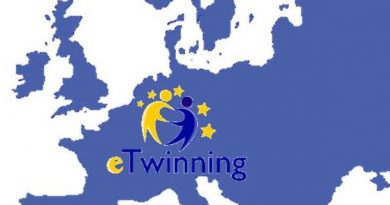CHALLENGING CHILDREN´S INTELLIGENCES: ESCAPE ROOMS
There is little doubt that motivation is a driving force that leads children to embark on putting their efforts in learning tasks. Nowadays, it is commonly acknowledged that successful teaching practice is very likely to happens in stimulating contexts. Dörnyei (2001) identifies three indispensable motivational conditions: appropriate teacher set of behaviours and a good relationship with the students; a pleasant and supportive classroom atmosphere; and a cohesive learner group with appropriate group norms. Obvious as it may seem, motivation is not the result of a single action or task, but rather the general feeling that arouses as a consequence of a supportive learning environment where children can engage attractive challenges. There is little doubt amongst teachers that motivation plays a crucial role in FLL and by extent, in any type of learning; in fact, in a majority of cases, motivated students can achieve a working knowledge of FLL regardless of their aptitude and cognitive characteristics (Dörnyei, Z. 2001)
How to motivate children? There is a wide array of literature describing procedures and strategies that on the whole come down to connecting with children´s likes, interests and preferences. Indeed, knowing who our students are is the first step to succeed in arousing motivation; nevertheless, there are some infallible tips like using games, stories, ICT, creating challenges and expectations or personalising materials (i.e. through didactic apps).
On the other hand, some of the keywords that identify a “competency-friendly” methodological approach: motivation, cooperative learning, interactive and dynamic strategies, contextualised learning, adequate materials and resources, weight of ICT and coordination amongst teachers. Similarly, we should have come to the conclusion that the competency approach is not a personal option but a “compulsory way” to focus our programming, as stated in Order ECD/65/2015.
The engaging power of real tasks in a pleasant environment is one of the hallmarks of any project; therefore, in a game-like procedure unit, children accomplish different challenges to practice all skills in a motivating scenario. The “escape classroom” is a complex task where the role of the teacher is that of “master of ceremonies”, indicating the tasks that give access to unlock the boxes. These physical boxes contain the secret codes that unlock the necessary digital files for the product: a comic with photos of the activities carried out along the project. Some possible tasks included in the “escape classroom” are:
Lock one. Video story. Listen to a video-story in the tablet and complete the different questions. The tasks requires listeners and writers; reordering sentences in the story, gapped texts, multiple options, asking for help and feedback.
Lock two. Send an email. Children collaborate to write a brief goodbye email to our European friends, including some words in their mother tongue learnt during the year.
Lock three. The flash-hats game. To obtain the next secret code, that unlocks a file with some special photographs, children have to make questions in English to guess the card on top of their heads.
Lock four. Running dictation. Children get the information for the comic in this text. Each group has runners and writers. The text consists of a series of sentences describing some of the photographs in the secret file.
Lock five. Kahoot contest: our friends´ cultures. Children unlock their files by answering questions related to our friend: where they live, features of their city/village, traditions and celebrations, festivities, and the like.
Lock six. Ramble games. The final lock involves children in a series of joyful games, like “hangman”, “monkey” (collective writing game: each group says a word until the sentence is finished), “categories”, “order the sequence”, “mime the sentence” (some students mime and others guess the words until they complete the sentence, secretly given by the teacher to the “mimes”.
Life is a comic. Using the photos and texts obtained in the different challenges, they make up their particular comic, where children and their friends are the real protagonists of this learning experience. Finally, the products are uploaded to the eTwinning space and shared with our friends (Comiclife app).
Comic us! Children read and watch their partners´ comics and share their readings with the rest of the class, reading aloud and showing the comic on the IWB.
As a final remark, it is worth noting that we can introduce technology in the game-like procedure according to the students´ age and school facilities; nevertheless, the management of the escape room can be adapted to varied situations and levels, it is just a question of challenging our own imagination.
Libow, S and Stager, G “Invent to learn: making, tinkering and engineering in the classroom”. Torrance, CA : Constructing Modern Knowledge Press, 2013.
Video by
Edmonton Journal


